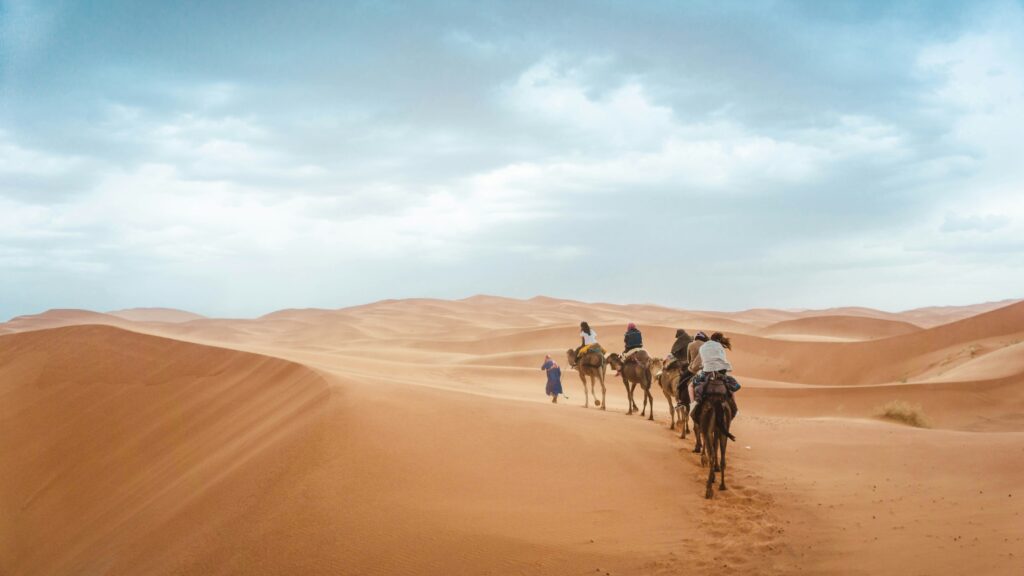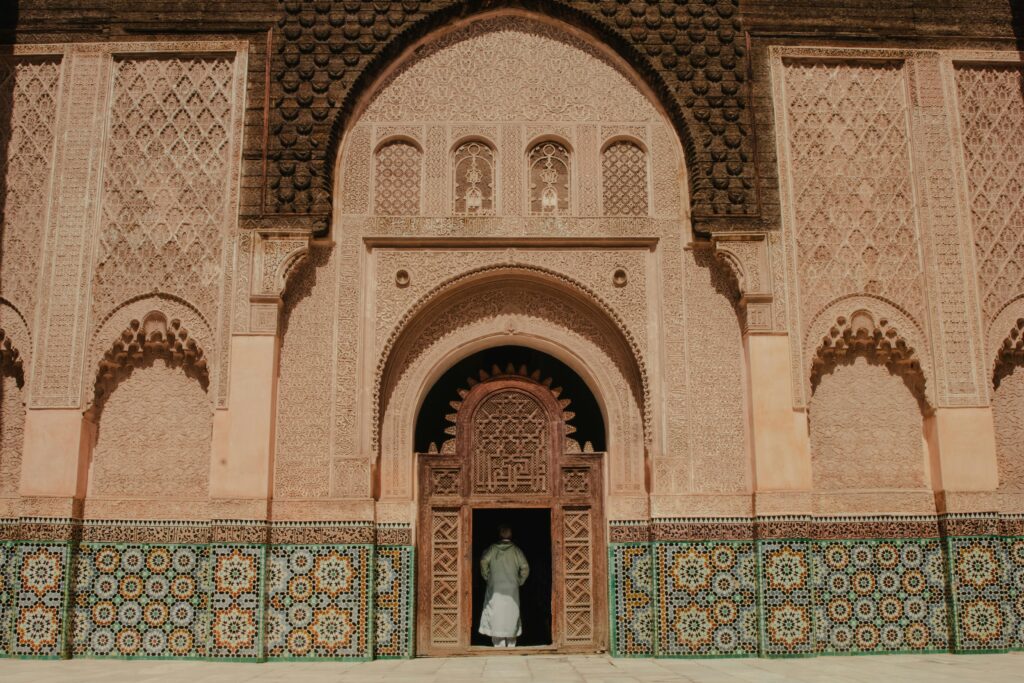
If you’re thinking about visiting Morocco, you’ve probably imagined colorful walls, beautiful doors, the smell of spices in the air, and markets filled with fascinating decorations.
You might have already saved a few Instagram-worthy spots and started sketching out your dream itinerary.
But organizing a trip to Morocco takes a bit more thought than it seems at first, and I’m here to make it easier for you! This simple guide will help you plan the adventure of a lifetime with minimal stress.
Morocco isn’t a place to visit without preparation. It’s not the ideal destination for travelers who prefer everything smooth and predictable.
You’ll likely face some persistence from vendors or guides sometimes it’s sales talk, other times it can feel a bit overwhelming.
In the cities, appearances can be deceiving; signs aren’t always accurate, and prices can vary depending on who’s asking.
That’s why it’s important to set the right expectations and prepare yourself mentally Morocco is an incredible destination, but not always a comfortable one.
With good planning, though, you can avoid unnecessary stress and fully enjoy your journey, all thanks to a little extra preparation in advance.
So, without wasting any more time, here’s how to organize your Moroccan trip without the stress or confusion.
Are You Planning a Trip to Morocco for the First Time?
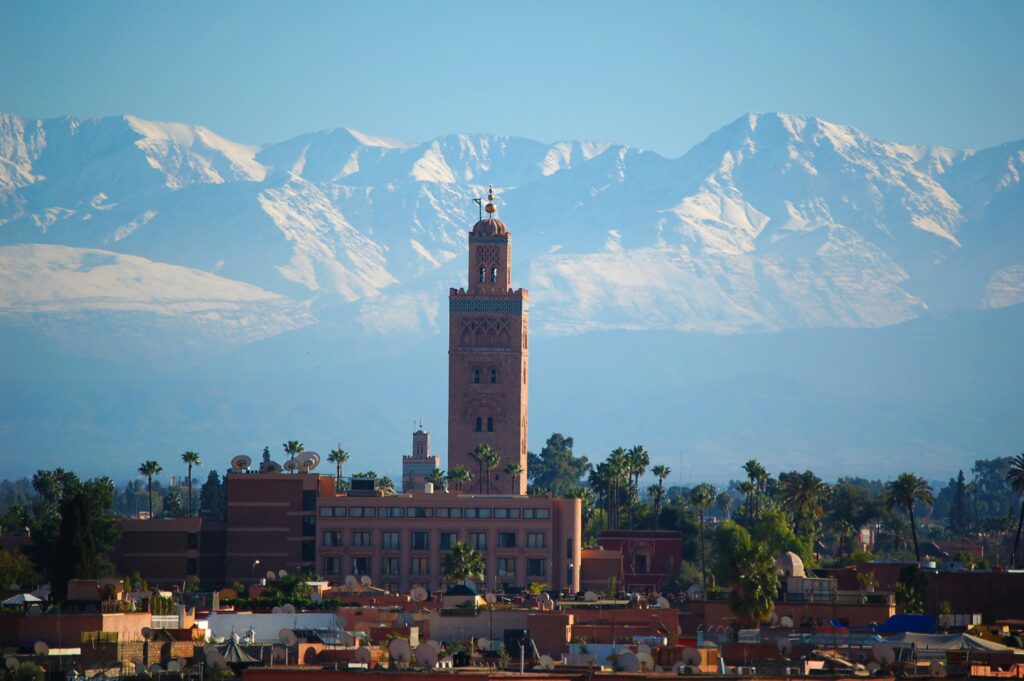
For many people around the world speaking from experience, planning a trip to Morocco isn’t exactly a simple hop, skip, and jump unless, of course, you’re coming from Spain or somewhere in North Africa. Chances are, you’ll want to spend more than just a quick three-day weekend and ideally visit two or three cities during your stay.
However, you might be surprised to learn that many of Morocco’s top destinations aren’t located close to each other. For instance, traveling from Marrakech to Fes by train takes around eight hours!
But don’t worry getting from one place to another doesn’t have to be complicated. With a little bit of know-how, you can easily plan a smooth itinerary. I’ve put together this guide to help make your planning easier and show you how to organize your trip in the most effective and enjoyable way, so when you arrive, you can focus on soaking up the culture instead of stressing over logistics.
Plan Your Trip to Morocco in 13 Easy Steps
If you’re a citizen of the United States, Canada, Australia, the United Kingdom, or most EU countries, you won’t need a visa for stays under 90 days in Morocco.
Make sure your passport is valid many countries require it to be valid for at least six months beyond your departure date from Morocco, so double-check the expiration date.

Step 1: Verify Visa Requirements
Morocco has a fairly relaxed visa policy. At the moment, citizens of many countries can stay for less than 90 days without needing a visa. However, it’s always best to double-check with your country’s embassy or consulate in Morocco before you travel, as policies can sometimes change.
Also, ensure your passport has at least one completely blank page available before you travel. Currently, there are no mandatory vaccinations required to enter Morocco.
Step 2: Book Your Flights!
Wondering how much it costs to fly to Morocco? The price largely depends on where you’re flying from and where you plan to land.
Morocco’s main airports include Marrakech (RAK), Rabat (RBA), Casablanca (CMN), and Fes (FEZ). Being flexible with your arrival city can help you snag better flight deals.
I usually rely on Skyscanner it’s a great tool that lets you compare prices across multiple dates and airports easily.
If you’re flying from the US or Asia, expect round-trip fares to start around $500, unless you catch a special deal. Travelers coming from Europe have an advantage, with flights often costing under $100 each way during promotions!
Step 3: Plan Your Morocco Itinerary
I’ve put together a Moroccan itinerary that’s easy to follow, starting with my popular 3-day Marrakech plan. If your trip is short, Marrakech is a great place to focus on—it offers plenty for tourists and is usually one of the most affordable airports to fly into, especially from Europe.
If you have extra time, I highly recommend adding a desert excursion (check out my detailed guide here). This typically adds about three days to your schedule.
For a one-week trip
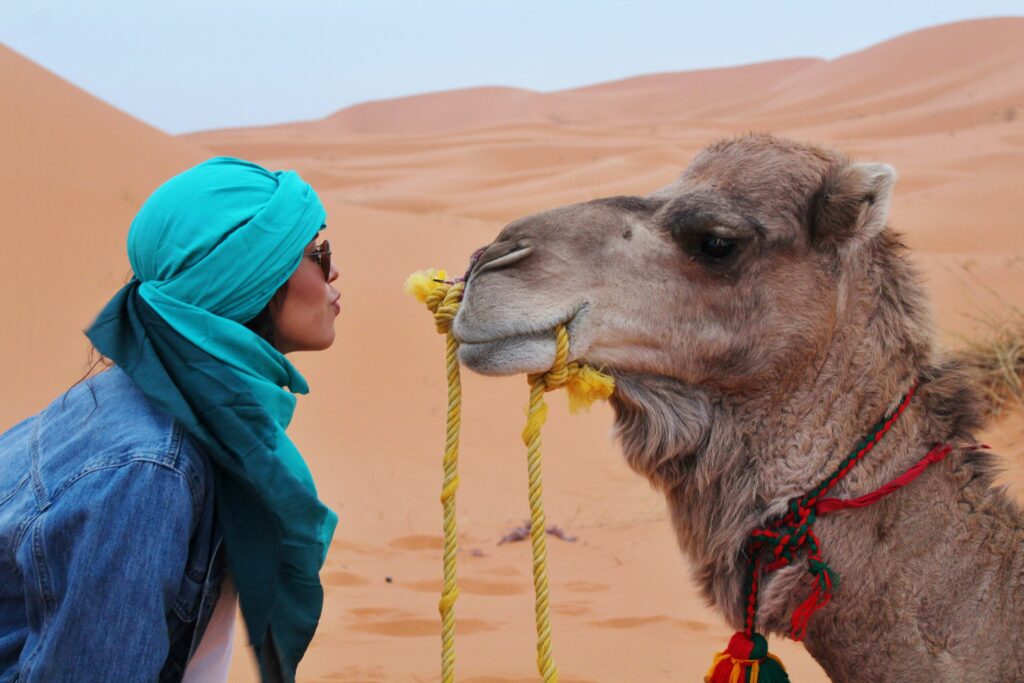
Step 4: Prepare for Your Arrival in Morocco
There are a few things you can do before landing to make your arrival smoother.
First, download Google Maps for the city you’re visiting. While it might not capture every alleyway—since Moroccan cities have lots of narrow streets not always on the map—it’s still a helpful starting point.
Next, arrange a shuttle or transfer to your hotel in advance. Many hotels offer this service, or you can book a reliable online transfer. Avoid taking a taxi at the airport to steer clear of being overcharged.
Lastly, decide if you’ll use your current phone’s roaming plan or buy a local SIM card or portable WiFi device. Planning this ahead can save you quite a bit on mobile data costs.
Step 5: Don’t Forget Travel Insurance!
If you haven’t already, now’s the time to consider travel insurance it’s a smart move for Morocco and any trip you take! I’ve personally used World Nomads for years, and it gives me peace of mind in case of emergencies like accidents, illness, theft, cancellations, or interruptions.
Morocco is generally a safe destination, but as with any travel, unexpected things can happen. It’s always better to be cautious than to risk your trip being spoiled by health issues or other problems.
Bonus Tip: Keep some cash in USD or EUR handy, just in case you run into issues withdrawing money from ATMs. Usually, ATMs offer better exchange rates than currency exchange offices, so try to use ATMs whenever possible and only exchange cash when absolutely necessary.
Step 6: Plan Your Activities in Advance
This advice might be a bit controversial some travelers suggest waiting until you arrive in Morocco to book activities, hoping to negotiate better prices in person.
I tried that once, and honestly, it didn’t end well. I ended up with a cheaper desert tour that cut a lot of corners. I’m talking about no air conditioning on a bus in weather, and I was told the transfer from Fes was included when it wasn’t. Plus, I was taken to a fake carpet shop where the rug I bought fell apart after sewing it.
And to top it off, my desert guide got way too close while I was sleeping definitely uncomfortable.
So, I highly recommend booking your activities ahead of time. This way, you can ensure they’re safe and trustworthy. Unfortunately, there’s a lack of transparency with some local sellers who promise a lot but aren’t always honest.
While Morocco is generally safe, scams targeting tourists do happen. Doing your homework in advance helps avoid any disappointment.
Yes, you might pay a bit more, but it’s worth it for peace of mind and a better experience. If you enjoy the thrill of the hunt, you could try booking once you get to Marrakech, but having been there myself, I wouldn’t recommend it.
Personally, I prefer a mix of independent travel and organized activities. Explore Morocco on your own but add in guided tours and excursions for the best of both worlds.
Below, I’ve listed some must-do activities to help you craft your perfect Moroccan adventure. Just click the links to learn more about each option.
Suggested Activities in Marrakech
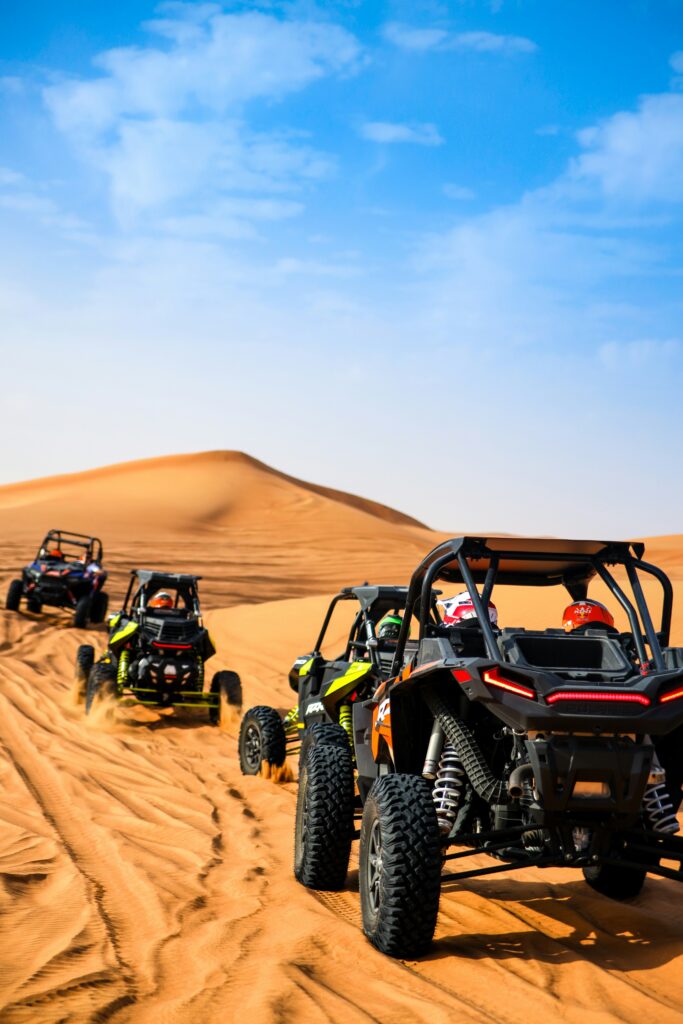
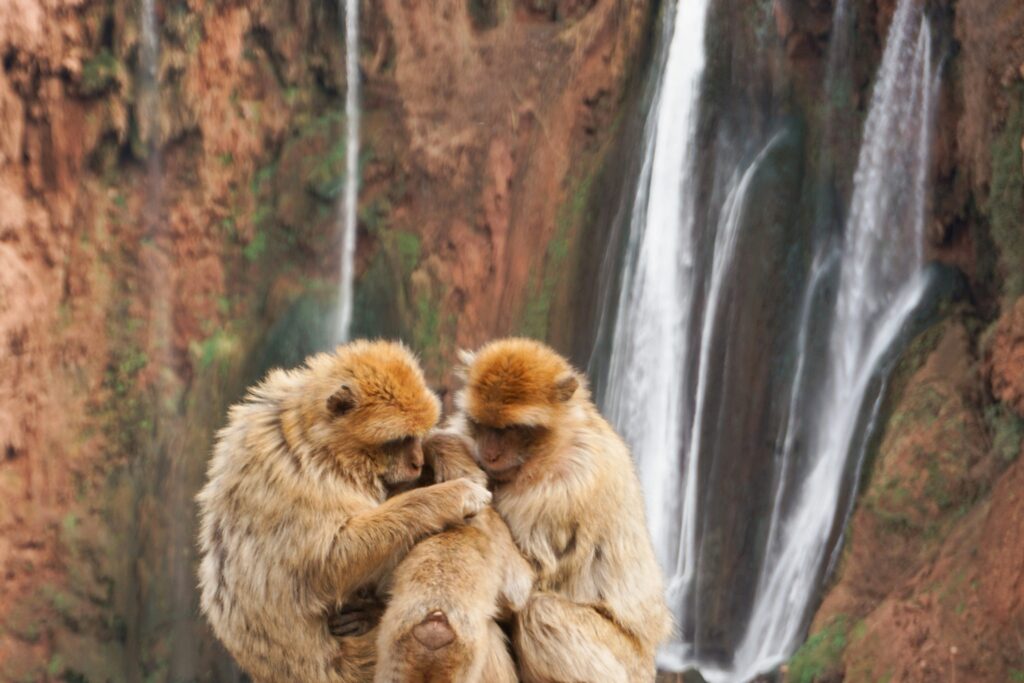
- Take a day trip to the beautiful Essaouira Beach
- Explore Ouarzazate, known as the Hollywood of Morocco, on a full-day excursion
- Visit the picturesque Ourika Valley on a day trip from Marrakech
- Experience a breathtaking sunrise or sunset from a hot air balloon
Recommended Desert Tours
- 3-day round-trip desert adventure from Marrakech to Merzouga
- 3-day desert tour starting in Marrakech and ending in Fes
- 4-day desert journey from Marrakech to Merzouga
- 4-day desert excursion from Marrakech to Fes
Step 7: Book Your Accommodation
You can’t visit Morocco without staying in a riads! But what exactly is a riad?
A riad is a traditional Moroccan home transformed into a guesthouse, featuring a beautiful central courtyard a peaceful oasis away from the lively city streets.
I have detailed guides for the best riads in both Marrakech and Fez, but here’s a quick rundown of some top picks in Marrakech:
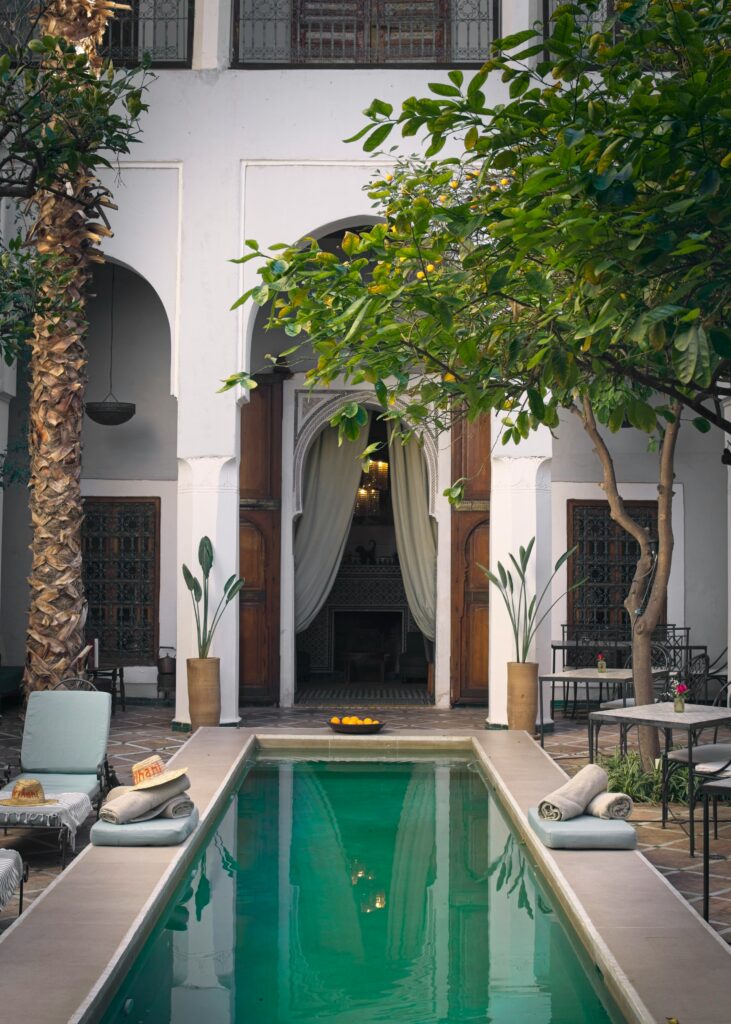
Budget:
Riad may look unassuming from the outside, but inside it’s warm and inviting. The modern design makes the courtyard a perfect spot to unwind, and the cozy private rooms with air conditioning offer great value. This family-run riad treats guests like one of their own and boasts an impressive 9.5 average rating on Booking.com.
Mid-Range:
The Enchanting Riad lives up to its name with stunning tilework, a rooftop terrace complete with a Jacuzzi, and beautifully detailed rooms with A/C. It’s so charming, you might never want to leave! Check current prices and availability here.
Luxury:
For five-star comfort without breaking the bank, Villa is hard to beat. This traditional riad offers spacious bathrooms, a large swimming pool, air conditioning (essential in summer!), and friendly staff. You can even take cooking classes or dine at the popular on-site restaurant. Located in the Medina but tucked away from the crowds, it’s the perfect blend of convenience and tranquility.
If you’re also planning to visit the Sahara Desert, be sure to check out my guide to the best luxury camps in the Sahara it’ll help you narrow down the many options out there!
Step 8: Check Vaccinations and Pack a Travel Health Kit
I recommend using the CDC website as your go-to source for the latest vaccine recommendations for travelers. Make sure your routine vaccinations—like measles, mumps, rubella (MMR), tetanus, chickenpox, and polio—are all up to date. The CDC also suggests considering vaccines for hepatitis A and typhoid, which can be contracted through contaminated food or water.
Other vaccines you might want to think about include hepatitis B and rabies. Rabies does exist in Morocco, and unfortunately, there was a recent tourist fatality linked to a cat bite. Keep in mind that even if you’ve had the rabies vaccine beforehand, you still need to get post-exposure treatment if bitten or scratched by an animal.
If you experience any animal bite or scratch during your trip—whether vaccinated or not—seek medical attention immediately. Doctors will evaluate if you need the rabies vaccination series. Rabies is nearly 100% fatal without treatment, but the vaccine is highly effective if administered promptly.
Personally, I had to undergo the rabies vaccine series after a cat bite during my travels in Ukraine. It was stressful, especially managing doses across three countries, but I’m grateful I took the necessary precautions.
When it comes to your travel medicine kit, pack essentials like stomach soothers (Pepto Bismol), anti-diarrheal meds (Imodium), motion sickness tablets (Dramamine), and pain relievers such as ibuprofen or aspirin. Don’t forget sunscreen and a strong mosquito repellent—preferably one containing DEET—plus treatments for insect bites. It’s also smart to bring topical antibiotics and bandages for minor cuts or scrapes.
For a complete checklist, see my detailed section on health preparations for Morocco!
Step 9: Learn Basic Arabic Words and Phrases
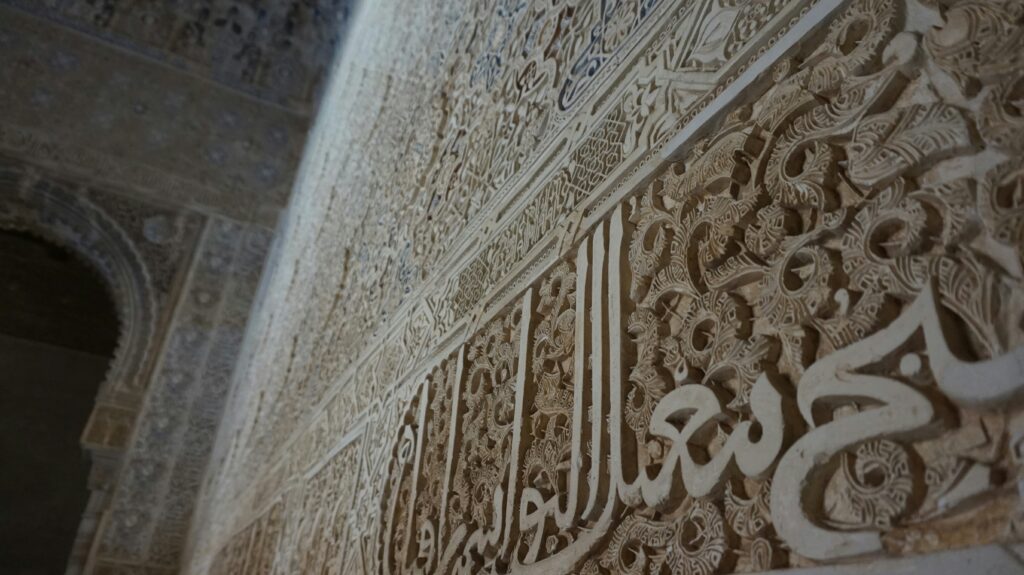
While French is widely spoken across Morocco and can be helpful if you already know it, I recommend focusing on Moroccan Arabic—called Darija—as it’s the most commonly understood local language. In northern regions like Chefchaouen and Tangier, Spanish is also frequently spoken, and I found it quite useful there.
Moroccans are incredibly skilled with languages. Once, I had a taxi driver switch between at least four languages during our conversation—Arabic, Spanish, French, and English! It’s common to meet locals who speak multiple languages, especially shopkeepers who often greet you in different languages hoping to connect with you.
Most people in the service and tourism industries understand basic English, and younger city residents usually have a good grasp of it. However, for detailed explanations or insights, hiring a professional English-speaking guide is recommended.
No matter your language skills, learning some Darija phrases is a wonderful way to show respect for the culture and people of Morocco. Here are a few essential ones to get you started:
- Hello – Salamo alaikom
- Peace be upon you (response) – Wa alaikom salam
- Thank you – Shukran
- Please – Aafak
- Sorry / Excuse me – Smahli (or Smhili when speaking to a woman)
- Yes – Ayiih
- No – Laa
- No, thank you – La shukran
- How are you? – Kif dayr? (to a man) / Kif dayra? (to a woman)
- Good / Fine – Bikhir
- What is your name? – Shno smitk? (to a man) / Shno smitik? (to a woman)
- My name is… – Smiti…
- Excuse me / Sorry (to get attention) – ’Afak
- Where is…? – Fin kayn…?
Even learning just “hello,” “thank you,” and a few more basics will go a long way in Morocco and will be greatly appreciated by locals!
Step 10: Respect Local Customs and Etiquette
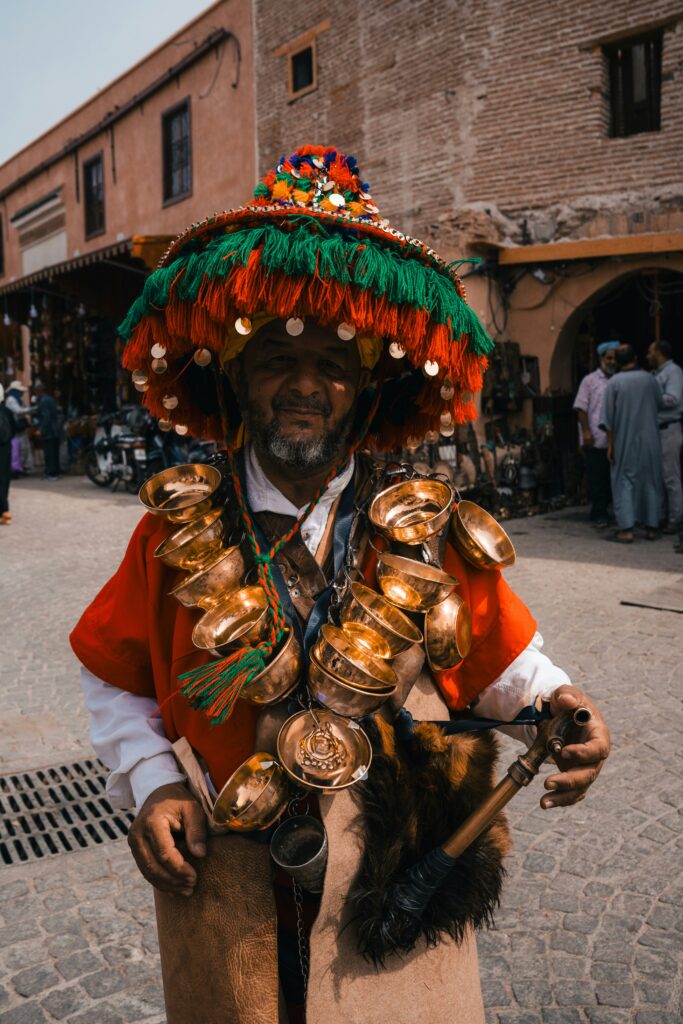
When visiting Morocco, being mindful of local traditions will enrich your experience and help you connect with the people.
- Dress modestly: Morocco is a predominantly Muslim country, so it’s respectful to wear clothing that covers shoulders and knees, especially when visiting mosques or religious sites. Lightweight long sleeves and loose-fitting clothes work well in the heat while staying modest.
- Ask before photographing: Always seek permission before taking photos of people, especially women and elders. Many Moroccans appreciate being asked first, and it shows respect for their privacy and culture.
- Tipping etiquette: While not always mandatory, tipping is customary in Morocco. In restaurants, leaving around 5-10% of the bill as a tip is appreciated. Also consider tipping guides, drivers, and hotel staff for good service—it’s a kind gesture that goes a long way.
Following these simple customs will help you enjoy your trip while showing respect to Moroccan culture.
Step 11: Pack Smart
- Choose lightweight, breathable clothes for the warm days, and bring some warmer layers for cooler evenings.
- Comfortable walking shoes are essential—especially for exploring the medinas, where the streets can be uneven and cobblestoned.
- Don’t forget a hat, sunglasses, and sunscreen to protect yourself from the strong Moroccan sun.
Packing thoughtfully will help you stay comfortable and enjoy your trip to the fullest!
Step 12: Pack Your Bags
If you’re unsure what to pack for Morocco, check out my detailed packing list (mostly for women, but useful for everyone).
I recommend bringing a backpack instead of a suitcase—medinas are tough to navigate with wheels. I love using the Tortuga backpack because it’s roomy and travel-friendly.
Since pickpockets are common in busy markets like Marrakech, consider a secure backpack like Pacsafe, which has anti-theft features like cut-proof material and lockable zippers. It’s practical, discreet, and stylish perfect for safe, stress-free travel!
Plan the Best Trip Itinerary in Morocco
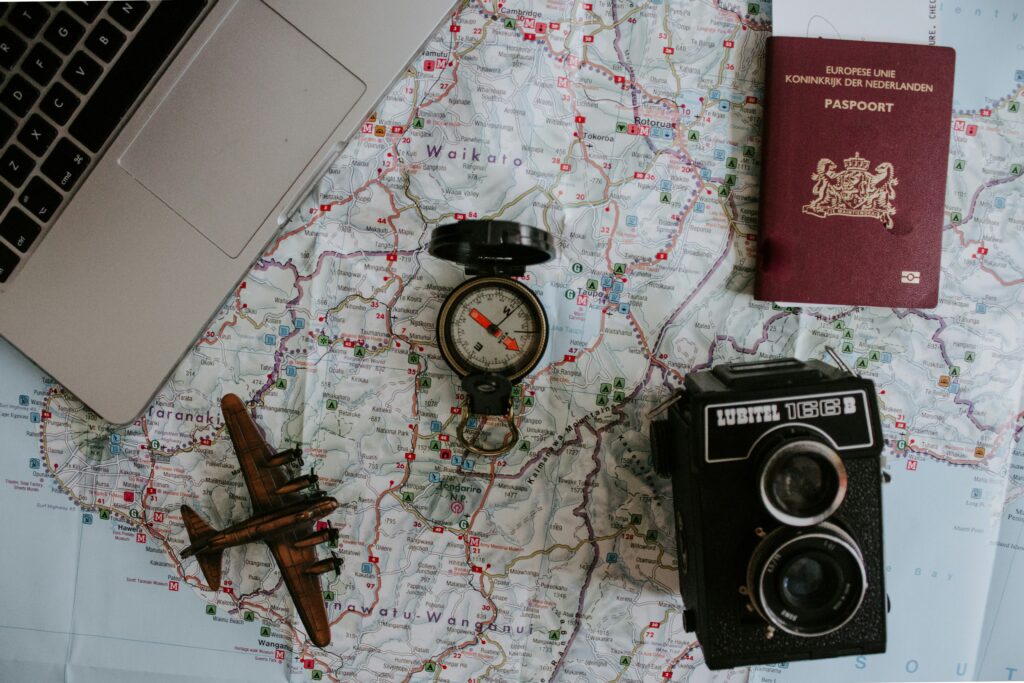
Morocco is a vibrant country full of rich history, colorful markets, stunning landscapes, and warm hospitality. Whether you’re dreaming of wandering through ancient medinas, exploring the Sahara Desert, or tasting delicious Moroccan cuisine, planning your itinerary carefully will help you make the most of your visit.
From bustling cities like Marrakech and Casablanca to serene spots like the Atlas Mountains and desert oases, Morocco offers a diverse range of experiences. In this guide, we’ll help you craft the perfect trip itinerary tailored to your interests and timeframe, ensuring a memorable adventure without the stress.
Ready to dive into the magic of Morocco? Let’s start planning!
Final Thoughts
Planning a trip to Morocco might seem overwhelming at first, but with a little preparation and the right guidance, it can turn into an unforgettable adventure. From sorting your visa and flights to packing smart and learning a few local phrases, each step helps you feel more confident and ready to explore this vibrant country.
Remember, Morocco is full of surprises, rich culture, and warm hospitality—so embrace the journey with an open mind and enjoy every moment!
If you found this guide helpful, feel free to share it with friends or leave your questions in the comments below. Safe travels and happy exploring!
